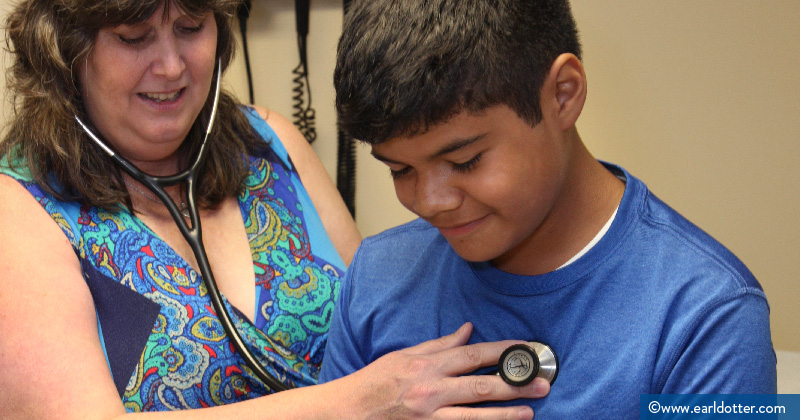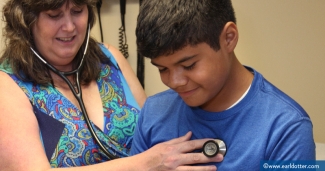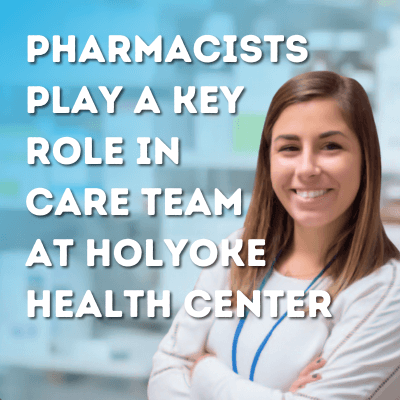What Primary Care Means: Notes from Amy K. Liebman on the Patient Perspective

[Editor’s Note: Earlier today, Amy K. Liebman, MA, Director of Environmental and Occupational Health for Migrant Clinicians Network, presented to the Committee on Implementing High-Quality Primary Care, of the National Academy of Sciences, Engineering, and Medicine. She described what primary care means for migrant and immigrant patients across the US, based on what our clinical network shares with us. The committee asked each panelist to answer three basic questions to better understand what primary care means for the patients they serve. Here is the transcript of her presentation.]
In 1984, three dedicated clinicians from various corners of the US met at a health care conference and shared their sense of personal isolation and dismay at the lack of resources available to clinicians to help them care for and advocate for farmworkers. They formed Migrant Clinicians Network, a clinical network dedicated to improving health care for farmworkers and their families. Today, 36 years after our formation, we are recognized as a force for health justice for underserved immigrants and migrants. MCN’s mission is to create practical solutions at the intersection of vulnerability, migration, and health. We envision a world based on health justice and equity, where migration is never an impediment to well-being.
What does primary care mean to the people your group represents?
MCN represents two groups and their views on what primary care means are different. The first group that we represent is the patient population we serve: migrant or immigrant workers and their families; refugees; and those made vulnerable due to their circumstances surrounding migration or the possibility of migration.
Many of our patients do not have authorization to work and live in this country in spite of their contributions to the American workforce. Many do not speak English. By and large, they have limited formal education and low levels of literacy. They fuel our economy and are employed in some of the most dangerous jobs. They process our meat, harvest our crops, build our homes, clean our offices, take care of our children, and keep our restaurants churning. It is not lost on us that this population makes up a significant portion of the “essential workers” who are laboring to keep food on our tables during this COVID-19 pandemic, and are those experiencing some of the highest infection rates.
For our patients, there is a general lack of understanding of what primary care means. It is not a term they created. For some it might mean a well visit and immunizations for their child. But, by and large, for our patients, primary health care is medical care. Primary care becomes the place you go when you can’t go anywhere else to address your health concern, even if primary care means only venturing to the hospital to die.
The other group MCN represents are our 10,000-plus clinicians – physicians, nurses, community health workers, and other stakeholders caring for migrant and immigrant workers and their families. They are based in various health care delivery sites including community health centers, health departments, and hospitals.
For our clinicians, primary care is health care that can be offered in a safe and trusted environment and where patients are treated with dignity. It’s care that centers on the patient, emphasizing care coordination and communication to transform primary care into "what patients want it to be.“ This means care that is provided in a language the patient understands, considers the patient’s culture and views surrounding health care, and acknowledges barriers such as lack of transportation, limited or no access to insurance, and poverty.
How can primary care better support the people your group represents?
This is not a new question and in answering, it is helpful to take a look at what has been said before. For that, I would like to turn our attention to Dr. Jack Geiger, who is considered the father of the community health center movement in this country. Today, community health centers serve as the primary medical home for over 29 million people in more than 12,000 rural and urban communities across America. Dr. Gieger started this movement with an understanding of the direct connections between poverty, health, social equity and access to basic human rights such as healthy food and clean water.
Dr. Geiger encountered a community-based health care model rooted in community empowerment while in South Africa during medical school. He witnessed the results of the approach: notable health improvements for the poorest patients. He set out to replicate that model in the US. In 1967, in the midst of the Civil Rights movement, Geiger helped establish the first community health center in the United States — the Delta Health Center, serving the African-American population of North Bolivar County, Mississippi. At that time, it was the second-poorest county in the United States, with high rates of malnutrition, unemployment upwards of 80 percent, and shocking living conditions unseen in most of the developed world. Members of the community were active participants in the health center, serving as board members and staff, contradicting the racist assumptions that poor black residents were unable to participate in decisions regarding their own health and the future of their community.
“Health involved more than health care,” said Geiger. The Delta Health Center dug wells and latrines, repaired houses, and taught community members to do the do the same. They created a bus system and wrote prescriptions for food that could be filled with food grown on farms cultivated by the community. Dr. Geiger was challenged by government officials for writing prescriptions for food. His response: “The last time I checked my medical texts, the treatment for malnutrition was food.”
Jack Geiger’s work and philosophy is as relevant today as it was in 1967. Primary care can support the population by recognizing that the structures that are in place are ones that we put there. And because we put them there, we can also dismantle them if they are hindering our goals. They can be undone.
For instance, deservedness based on immigration status is a structure that we have put in place. We believe that the immigration status of a patient should make no difference to primary care.
Another example: A patient’s fixed location is an assumption on which we have built our health systems structures, which has resulted in geographically stagnant health care. We believe that health systems must be rebuilt to ensure that migration and immigration do not interrupt health care.
If you could insert one recommendation in the report, what would it be?
Universal health care coverage is essential to primary care and it must be provided without exceptions.
Health care should not be limited by citizenship nor ability to pay. If you live within the US, you have a right to health care.
Like what you see? Amplify our collective voice with a contribution.
Got some good news to share? Contact us on our social media pages above.
Return to the main blog page or sign up for blog updates here.
- Log in to post comments






